Inside\Within is a constantly updating web archive devoted to physically exploring the creative spaces of Chicago's emerging and established artists.
Support for this project was provided by The Propeller Fund, a joint administrated grant from Threewalls and Gallery 400 at The University of Illinois at Chicago.

Search using the field below:
Or display posts from these tags:
3D printing 3D scanning 65 Grand 7/3 Split 8550 Ohio 96 ACRES A+D Gallery ACRE animation Art Institute of Chicago Arts Incubator Arts of Life audio blogging Brain Frame CAKE Carrie Secrist Gallery casting ceramics Chicago Artist Writers Chicago Artists Coalition Chicago Cultural Center Cleve Carney Art Gallery Clutch Gallery Cobalt Studio Coco River Fudge Street collage collection Columbia College Chicago Comfort Station comics conceptual art Contemporary Art Daily Corbett vs. Dempsey Creative Capital DCASE DePaul University design Devening Projects digital art Dock 6 Document drawing Duke University dye Elmhurst Art Museum EXPO Chicago Faber&Faber fashion fiber Field Museum film found objects GIF Graham Foundation graphic design Harold Washington College Hatch Hyde Park Art Center illustration Image File Press Imagists Important Projects ink installation International Museum of Surgical Science Iran Jane-Addams Hull House Museum jewelry Joan Flasch Artist's Book Collection Johalla Projects Julius Caesar Kavi Gupta Links Hall Lloyd Dobler LVL3 Mana Contemporary metalwork Millennium Park Minneapolis College of Art and Design Monique Meloche Museum of Contemporary Art Chicago (MCA) Museum of Contemporary Art Detroit (MOCAD) Museum of Contemporary Photography (MoCP) National Museum of Mexican Art (NMMA) National Resources Defense Council New Capital Northeastern Illinois University Northwestern University Ox-Bow painting paper mache Peanut Gallery peformance Peregrine Program performance photography PLHK poetry portraiture printmaking public art Public Collectors publications Renaissance Society risograph rituals Roman Susan Roots&Culture SAIC screen printing sculpture Sector 2337 Shane Campbell Silver Galleon Press Skowhegan Slow Smart Museum Soberscove Press social practice South of the Tracks Storefront SUB-MISSION Tan n' Loose Temporary Services Terrain Terrain Biennial text-based textile textiles The Banff Centre The Bindery Projects The Cultural Center The Franklin The Hills The Luminary The Packing Plant The Poetry Foundation The Poor Farm The School of the Art Institute of Chicago (SAIC) Threewalls Tracers Trinity College Trubble Club University of Chicago University of Illinois at Chicago (UIC) University of South Florida at Tampa Valerie Carberry Vermont Studio Center video weaving Western Exhibitions wood carving woodwork Yellow Book Yollocalli Arts Reach zinesInside\Within is produced in Chicago, IL.
Get in touch:
contactinsidewithin@gmail.com
Melanie Pankau's Geometric Meditations
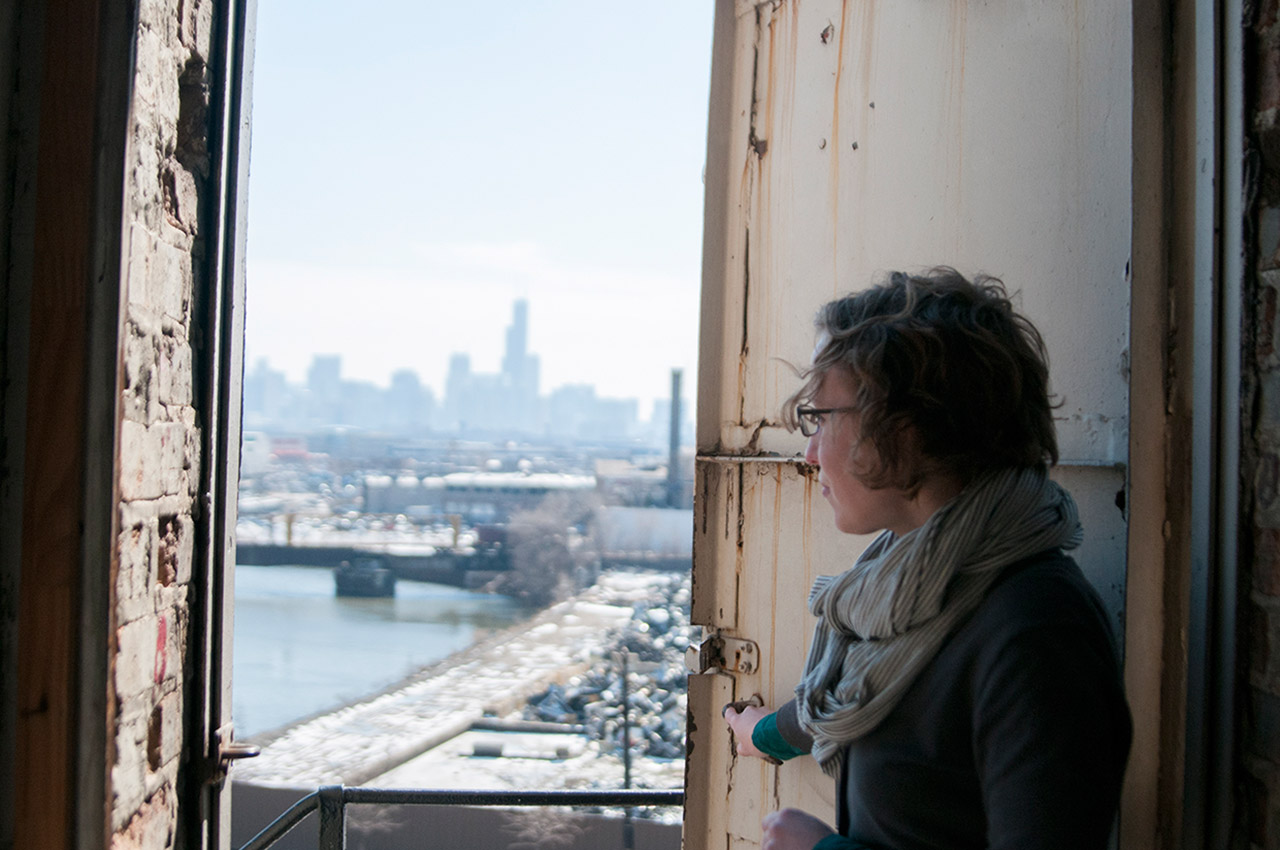
Melanie’s studio overlooks the skyline, a bright loft divided between her and her husband. Strands of tape litter one wall, pickings of her purposeful procedures in line and geometric form. Focusing intently on palette and drawings, Melanie’s paintings go through several preliminary rounds before finally ending on a finished product.
I\W: Why was it important for you to show the audience the process behind your pieces in the series Accumulations?
MP: Sometimes when you view a painting, you just see the completed painting and not always the process of it. The process is so important to me, especially the drawing, because I do so many preliminary sketches to find the form. With the palette records, the colors change so much throughout the process. There is this evolution that happens. I wanted to give insight to how much goes into a painting. For each painting I included all the sketches I had done, layering them.
What inspires the shapes within in your paintings?
That’s really hard to say because the forms aren’t something that I see—they come from someplace else. I think it is a metaphysical place and I am just a conduit.
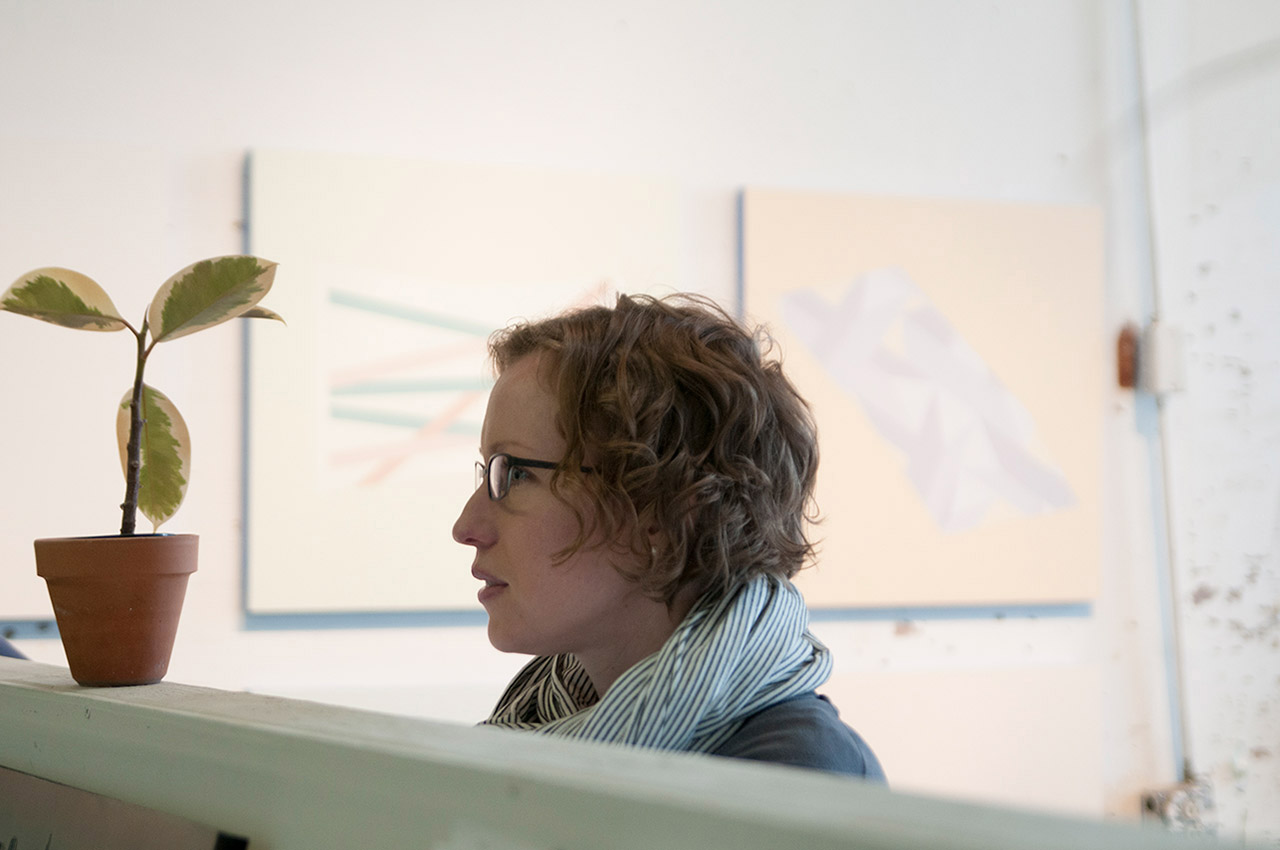
Does this include inspiration coming from meditation?
I think so. That state of mind during creativity and that state of mind during meditation are a lot alike, they have the same kind of components. I think I am trying to give my audience a meditative experience, or the experience of slowing down and looking.
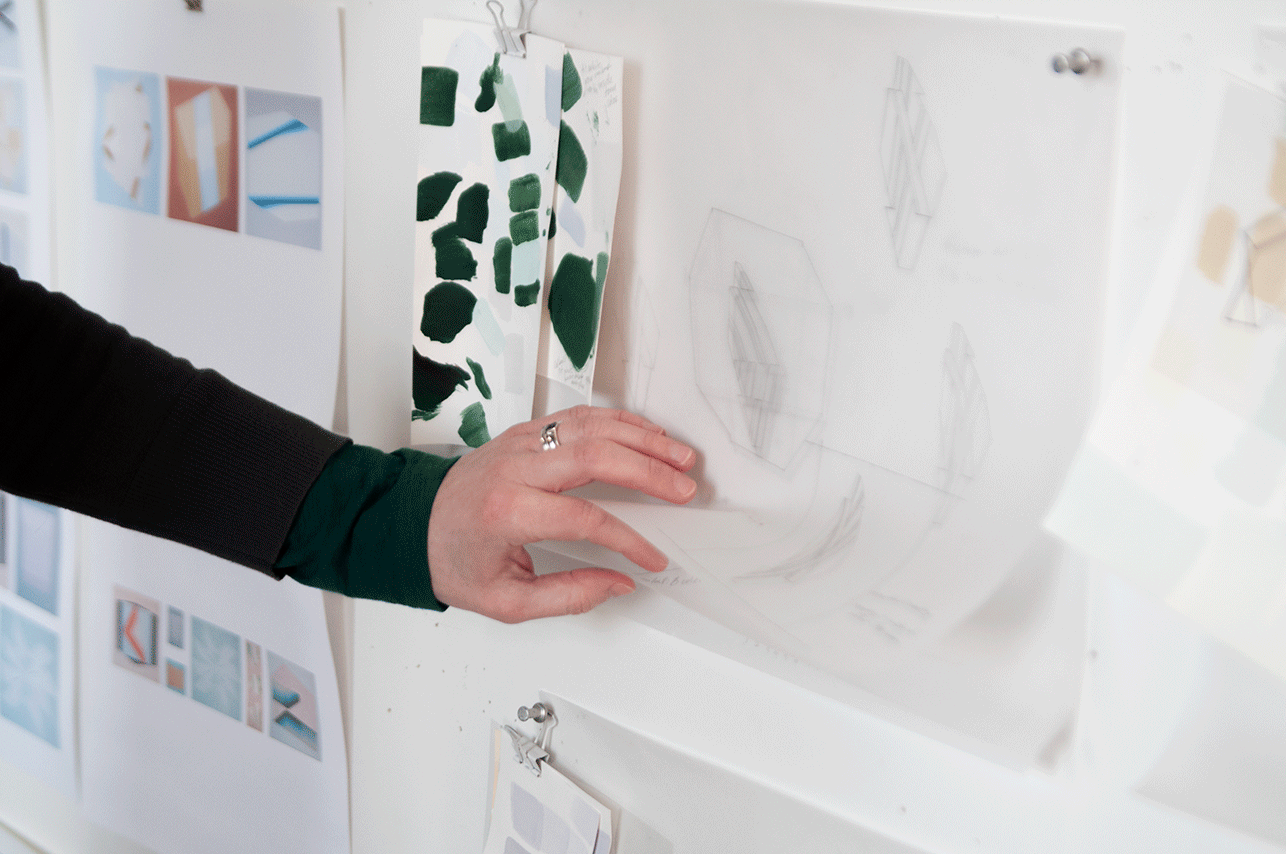
How do your pieces relate to the fragmentation of time?
There is the meditative aspect to my work and then I am also interested in ideas around time and temporality because I think that we are experiencing that so much in our culture now—especially with technology. With computers, if something doesn’t load in two seconds we are onto the next thing. It is quick all the time. With painting or creating, I will spend six to nine months just making one piece, so there is this experience of time on opposite ends of the spectrum. I am moving very quickly through my daily life, but then I get in my studio and everything just slows down. I don’t want to be rushed. I like that it is slow and laborious, and it evolves over time.
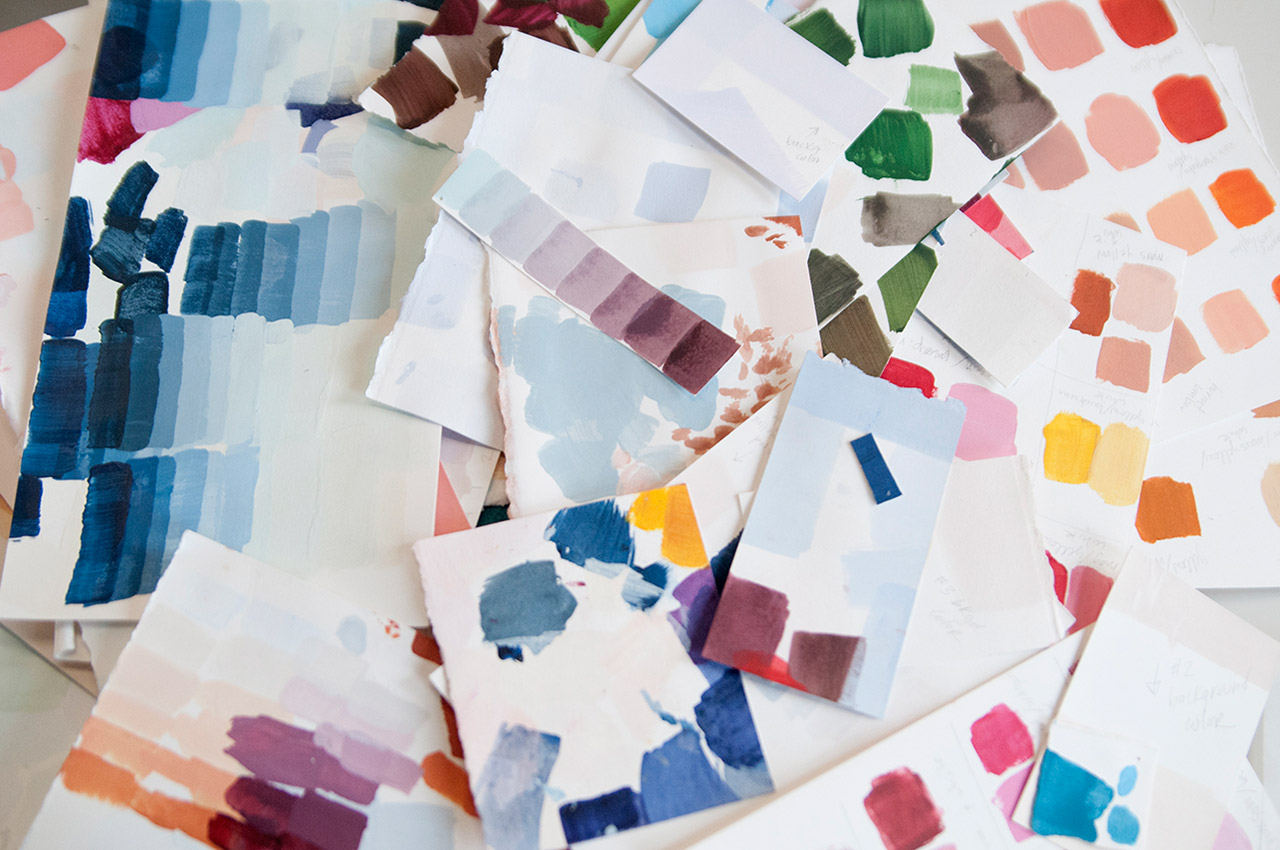
What is the longest component of creating a piece?
Part of my process is laying down a color and seeing what I think of it, and usually there are adjustments. I will either go back in and add on top of it, or sand it down and start again. I can only process so much in my head. I have to physically do it and see it, and then react to it. Once the color is down and I pull off the tape, the reaction is pretty immediate. Solving the problem takes a lot longer. I can see the color needs to be lighter or darker, or an entirely different palette. It really depends on the piece.
I will spend six to nine months just making one piece, so there is this experience of time on opposite ends of the spectrum. I am moving very quickly through my daily life, but then I get in my studio and everything just slows down.

What did your series 8,760:hours refer to?
That’s how many hours are in a year, and it took me a year to finish that suite of work. That goes back to temporality and working on a body of work for a year and what all happens within a year—within the work, within your own life, within your daily experiences. So much changes and there are so many shifts and edits and evolutions.
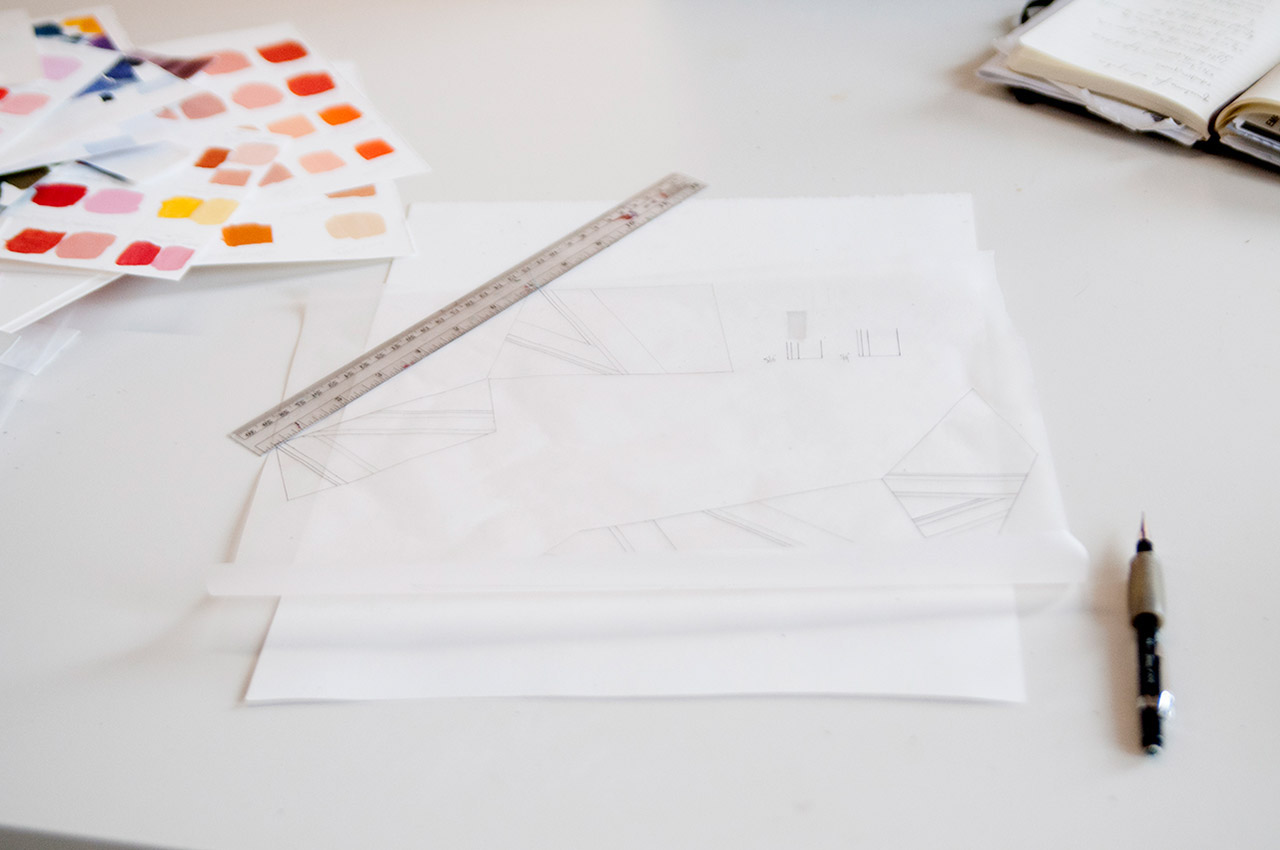
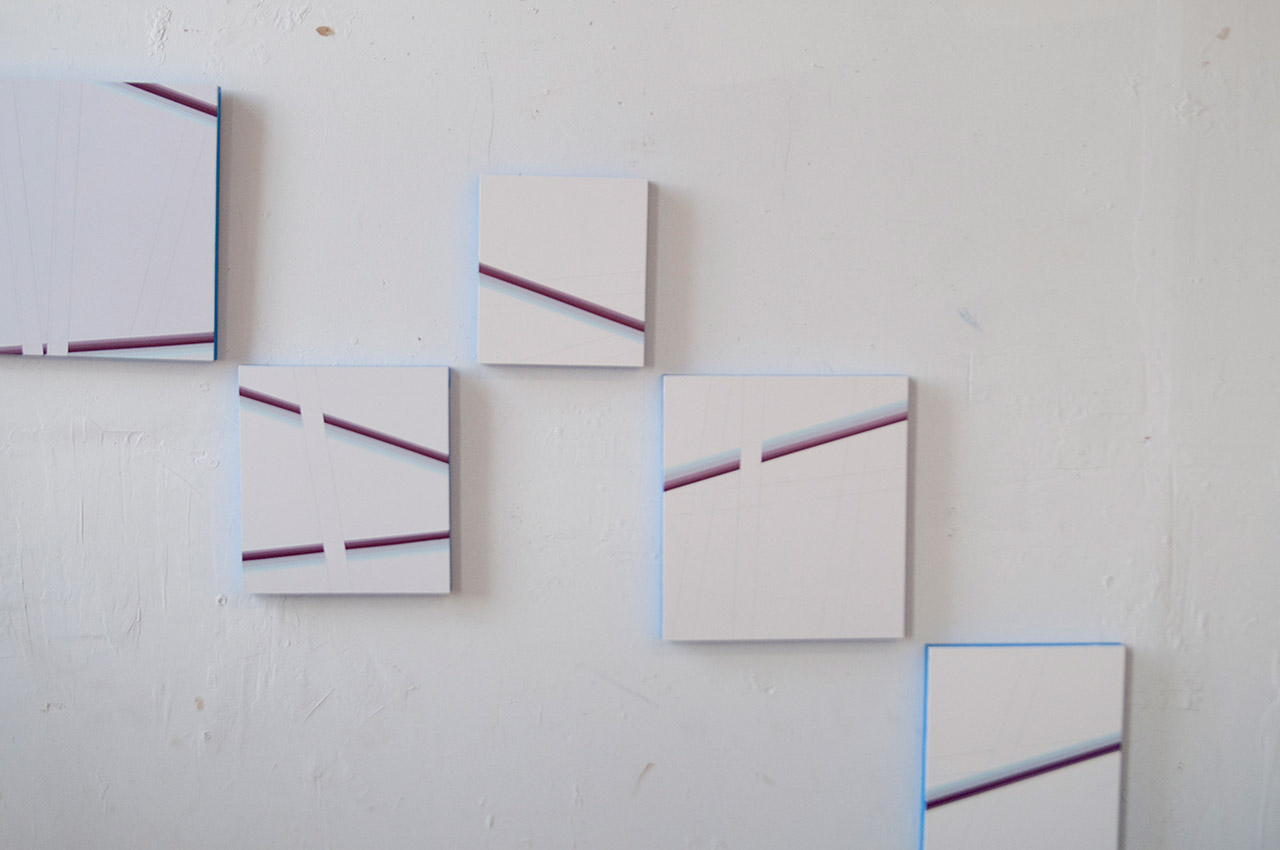
Have you always painted so geometrically?
I have always worked abstractly, and for a long time it was all organic shapes. However people’s reactions to them were always trying to relate it to something representational. They were always seeing things in my paintings like seashells or trees or leaves. That was a turning point for me, and I started to move more geometric because I was trying to get rid of all of those representational connotations that people were placing on my paintings.

Painting is a cleansing process for you, but the process within that is so structured. How does that duality play into your work?
For me, the structuredness is comforting. There is something comforting about working within that form, that process.


